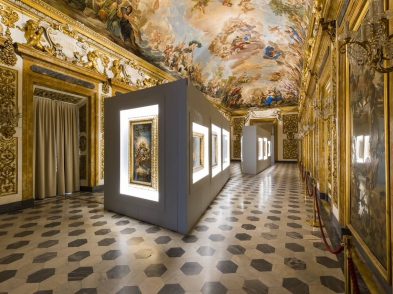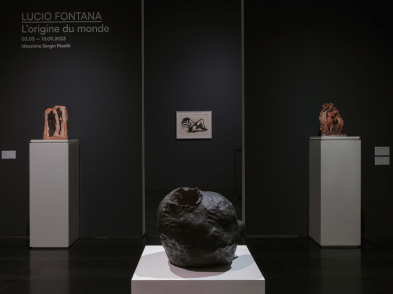Since late June, the different spaces contained within Forte Belvedere, which was conceived for the defence of the city government, have been occupied by the rich imagination of artist Nico Vascellari. Distributed around the ramparts and basements, magazines and 16 rooms of the palazzina are 40 new and recent works, sculptures, video and installations expressive of this artist’s dark cultural mindset that he has collectively titled Melma, or “Mire”.
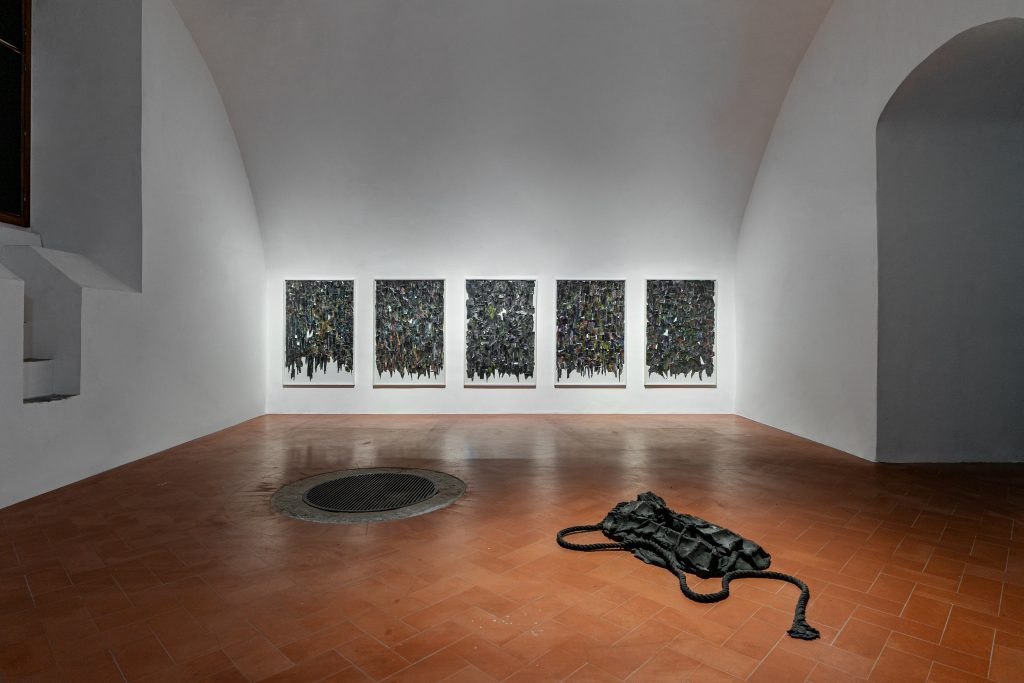
The exhibition title stimulates vivid expectations and a certain degree of dread. After all, a mire is swampy ground that, at its worst, living creatures might be sucked into and from which naturally mummified bodies have been brought back to light after centuries. A mire is not pleasant: it is mucky, primordial and transformative. In English, the word also implies a complicated situation from which it is difficult to extricate oneself. So far, so spooky.
Shrouded by far-off base notes, because music is everywhere, the first encounter is with a closed hatch in the floor. On the walls, large panels frame matter from the human world (printed magazines) resurrected from the stage of decay like forest litter, where its forms, fragments and stories are lost. In an adjacent room, rock-like sculptures loom out of the dark like excavated cadavers on plinths. This exhibition might require a strong stomach. From this point onwards, the artist’s imagery comprises an array of animal parts and human limbs, plants and motors, even birds’ nests deconstructed part by part to resemble an unlikely DIY kit for avian modellers. Sometimes these elements are put together in unexpected combinations, like assorted crockery too hastily mended or a medieval bestiary attuned to today’s appetite for media sensation or dystopian science.
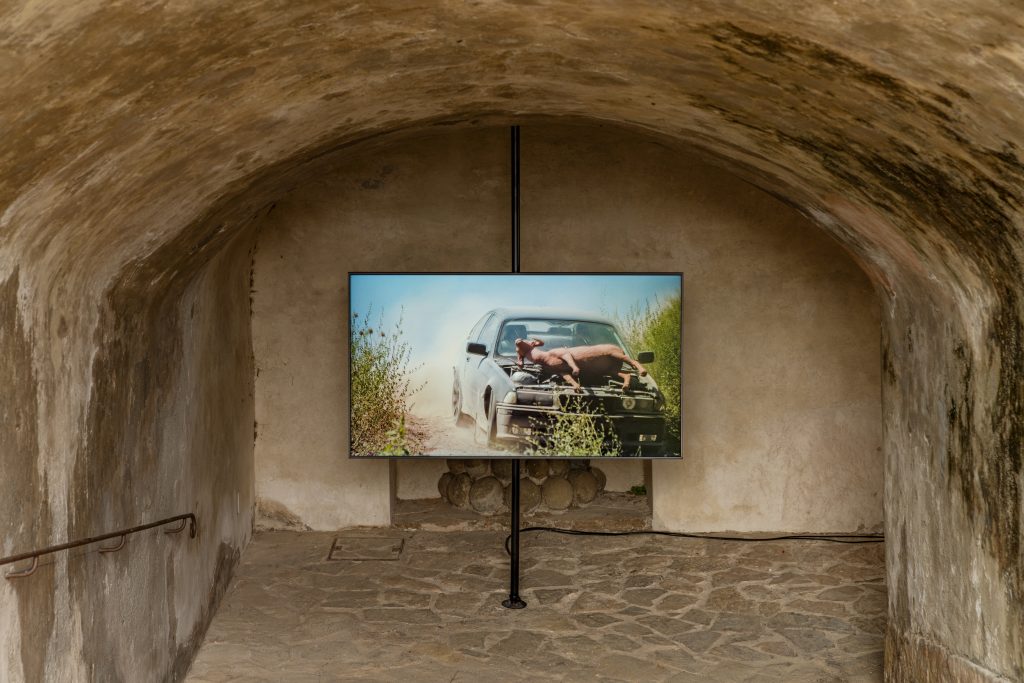
Perhaps the strongest properties in Melma are its ambiguity and prevailing spirit of unease. Objects, fetishes, sounds and spaces are altered out of recognition like features in a theme park about degeneration and metamorphosis. Its emblem is the radiant sun on the fort’s façade, glinting with life-giving light, but composed of the blades of numerous scythes. For millennia, humans have woven stories from such material to explain their precarious existence. Fuelled by myth, folklore and religion across centuries, their invention persists, finding new expression in the hands of fantasy writers and sci-fi filmmakers.
Melma is a manifestation of the timeless preoccupation with the dark side. A snake form is displayed in a continuous loop emerging from and disappearing back into a pneumatic tyre; a hand emerges from the body of an owl; a battered box emits squawking sounds and jumps excitedly across the floor, implying the cruel imprisonment of a creature deprived of light. The head of a wolf projects from a wall, but its upper jaw is missing.
Vascellari’s worldview resides in the poetic domain of folklore, storytelling that fosters shared identity within isolated communities. In the Cansiglio plateau of extensive woodland in the north-eastern Prealps, near which Vascellari’s hometown of Vittorio Veneto is located, local tradition maintains that the canopied landscape emits a strange light. Generations have explained the phenomenon as the arcane power of nature to cradle deep secrets, long associated with magic and satanic legend. The extensive forest of the region harbours underground sinkholes with internal architecture like Piranesi’s imagined prisons. With its wells, caverns and precipices, the mysterious place lends its name to the work stretched across those first rooms: “Bus de la lum”. In Veneto dialect, the phrase means “hole of light”, the clue to what lies below that hatch in the floor. For sometimes, reality trumps even folklore. In Cansiglio, that may be the case. It was the seat of partisan resistance to the German occupation. In summer 1944, the Bus de la Lum was used as an improvised cemetery for combatants as well as local civilians killed by the Nazi and Italian fascist forces.
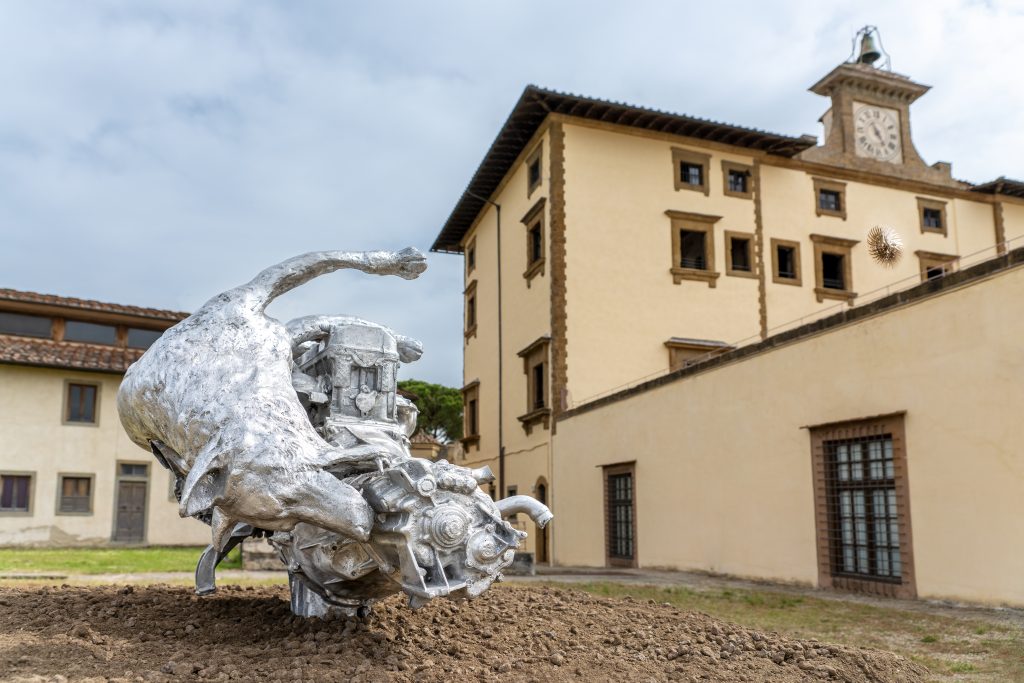
That potent material hinterland offers a kind of context for this show. Vascellari identifies closely with his hometown. A neon wall-piece he made in 2014 (not included here) that he called Autoritratto, HCVV (Self-portrait, HCVV) features two sets of initials illuminated in orange light that brought together two elements that had come to stand for the artist up to that time. One set was Vittorio Veneto (“VV”) itself, where he maintains a strong presence. Since 2005, a section of his studio, called Codalunga, has hosted exhibitions, performances and experiments by other artists that art institutions have not yet embraced. The other initials, “HC” stand for hardcore punk music, a different kind of underground activity in cave-strewn Cansiglio. Originally a musician, Vascellari developed as a performance artist to give his punk expression a visual dimension. In his past shows, images have depicted moments of chaos at hardcore concerts, such as a band member preparing to dive into the crowd below the stage. “My performances and sound works often resonate with the sense of discomfort,” he once told an interviewer. That quality stayed with him into the next stage of his personal transformation, as a multimedia visual artist. His counter-cultural background contributes to the intensity of his work and its desire to immerse the viewer in sensation.
Florence played a major part in his breakthrough into the wider art world. In June 2003 at Galleria Biagiotti, the former bicycle repair shop in via delle Belle Donne opened in 1997 as a showcase for emerging Italian artists by the Arizona-born Carole Biagiotti, he presented Buio primario, the first of three live performances (with the others in Rotterdam and Monfalcone) that drew attention from leading commentators to his vocabulary of compelling motion, music, image and form. So his current show celebrates the anniversary.
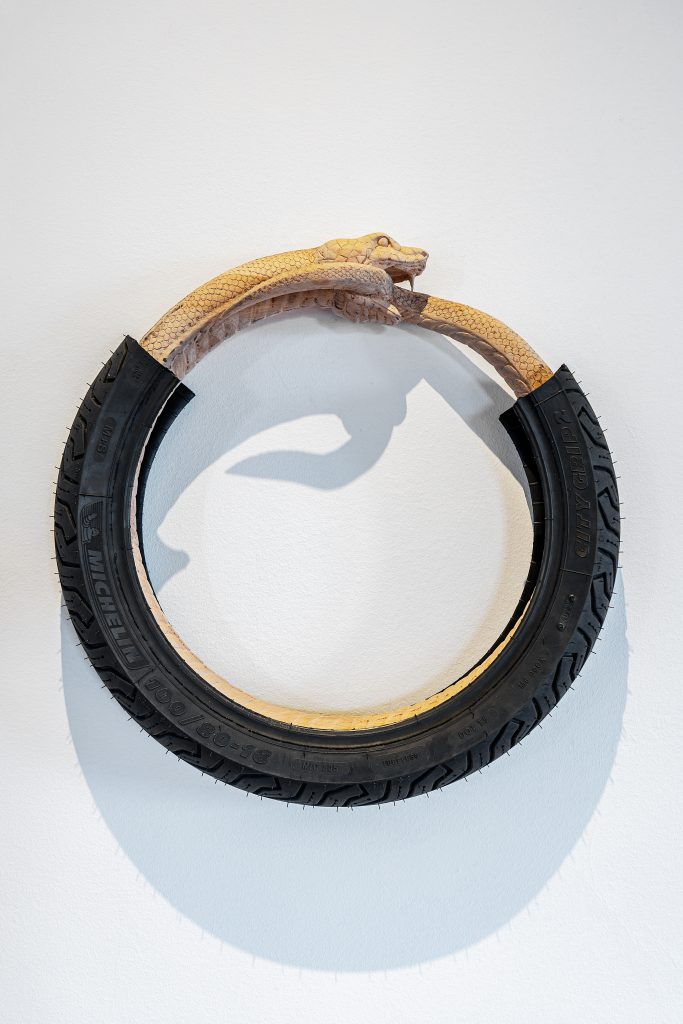
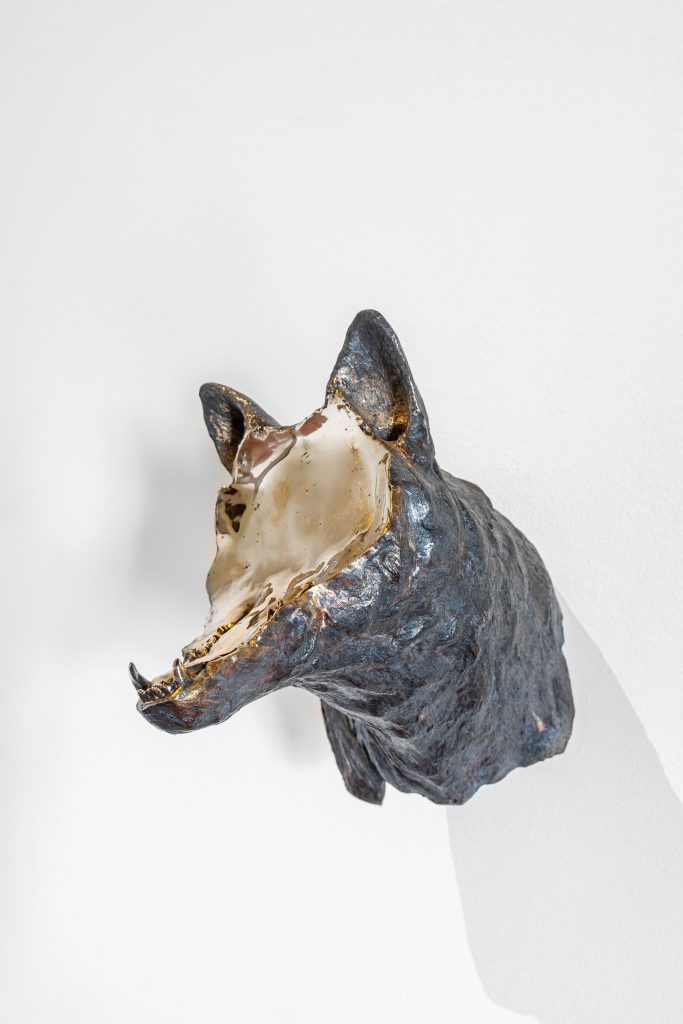
With that route into art and no formal art education, Vascellari may still perceive himself as an outsider to the art system. Yet he has shown at leading venues such as MAXXI, in Rome, and Manchester’s Whitworth Art Gallery; he won the prize for Young Italian Art at the 2007 Venice Biennale and featured in a video performance with Marina Abramović. Nonetheless, his art retains an edge that cuts into contemporary thoughts about identity with its foothold in putative mythologies, popular rituals and the downright creepy. Yet his sources are deep-rooted in art’s history. In full flow among the aluminium sculptures set out on the grassy ramparts of the fortress is a shape-shifting therianthropy that can be traced beyond the fantastic allegories of Hieronymus Bosch to cave drawings dating back 10,000 years uncovered in France, Australia and South Africa.
Vascellari’s animal hybrids—part-lion, for example, and part-combustion engine—preside over the city from inert blocky plinths, like symbols of a modern heraldry or alarming predictions of future science. “A horse and a stag have something divine about them that mechanics has not,” the artist has said. “But new centaurs may exist, hybrid forms of an animal and industrial nature.” Humans have long been fascinated by supernatural “composite” beings that might reflect contrasting aspects of human personality. Montaigne, the genial and worldly French philosopher, observed in the 1580s that “I have never seen a greater monster or miracle than myself.” Vascellari continues that mix of wonder and horror for his modern audience, in metaphors fit for the motor age.
“The entire exhibition,” the artist says, “is designed to create links between opposite poles: inside and outside, above and below, east and west…” In his film, Vit (2020), a man (the artist) is anaesthetised before being hoisted aloft by a helicopter to ride an open platform high above forested mountains and valleys. The viewer realises that, while the camera captured his breathtaking journey, the artist experienced none of it. Instead he flew in a universe of his own imagination, deep in his subconscious and perceiving even greater vistas.
Nico Vascellari: Melma
Forte Belvedere
Until October 8
Free admission
In October, the MELMA exhibition will continue with video artworks at Museo Novecento in piazza Santa Maria Novella.

